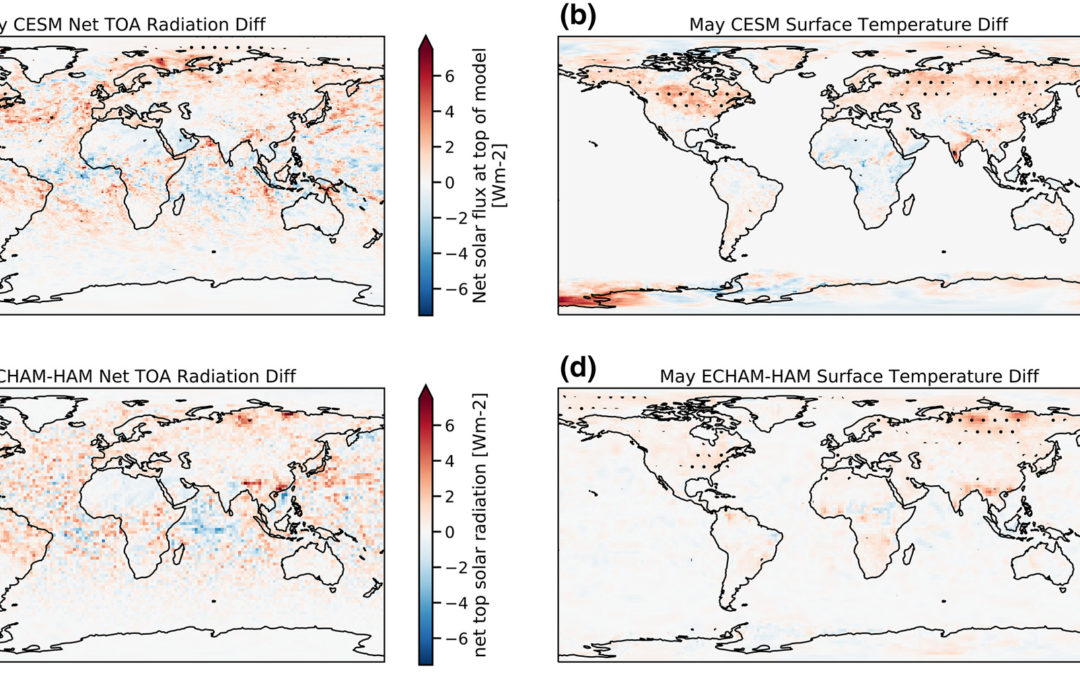SOURCE: Geophysical Research Letters
DATE: December 29, 2020
SNIP: The COVID‐19 pandemic changed emissions of gases and particulates. These gases and particulates affect climate. In general, human emissions of particles cool the planet by scattering away sunlight in the clear sky and by making clouds brighter to reflect sunlight away from the earth. This paper focuses on understanding how changes to emissions of particulates (aerosols) affect climate. We use estimates of emissions changes for 2020 in two climate models to simulate the impacts of the COVID‐19 induced emission changes. We tightly constrain the models by forcing the winds to match observed winds for 2020. COVID‐19 induced lockdowns led to reductions in aerosol and precursor emissions, chiefly soot or black carbon and sulfate (SO4). This is found to reduce the human caused aerosol cooling: creating a small net warming effect on the earth in spring 2020. Changes in cloud properties are smaller than observed changes during 2020. The impact of these changes on regional land surface temperature is small (maximum +0.3 K). The impact of aerosol changes on global surface temperature is very small and lasts over several years. However, the aerosol changes are the largest contribution to COVID‐19 affected emissions induced radiative forcing and temperature changes, larger than ozone, CO2 and contrail effects.

